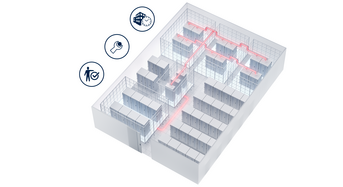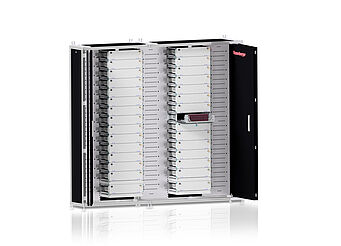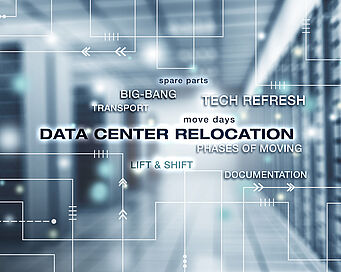Solutions for colocation providers
Outsourcing or the use of managed services can bring genuine added value for colocators. In such cases, an external provider is entrusted with providing IT services at precisely the time when they are needed. In this way, colocators save themselves the cost of hiring specialist personnel who they might not need in the long term. Managed services can also help relieve the workload on the colocator’s inhouse personnel during peak periods. Service providers can also help during installation activities by implementing new cable paths.
One way to save time during initial installation is to eliminate the need to clean the connectors. In optical fiber cabling systems, this is possible thanks to the use of sealed connection interfaces. Rosenberger OSI calls this quality feature PreCONNECT® PURE and currently offers it for all optical fiber cabling systems with LC, MTP® or MU connectors.
If colocation providers are to respond flexibly to different customer requirements, they need components that offer customization capabilities. The scalability of the cabling infrastructure is particularly important with regard to cage and suite customers. These customers often only need incremental increases in the bandwidth and fiber channel count in order to ensure that, as far as possible, their operating costs increase in step with their IT. Panel systems with different vertical and horizontal divisions of the front plates, variable segmentation of the panel back planes and differing panel depths offer a high level of modularity and scalability. The possibility of combining multiple connection and fiber types flexibly within one and the same panel provides an optimum solution. The highly modular and reduced-plastic 19” PreCONNECT® SMAP-G2 panel systems combine these options in a single panel. The PreCONNECT® SMAP-G2 SD is also available as a splice panel specifically for splice cabling.
In this way, Rosenberger OSI provides everything from a single source: Services and products. The advantage for colocation providers is that there is no loss of time or information and no warranty queries.
Summary
Very many businesses are opting for colocation. They often have very specific requirements regarding colocation services. Colocation providers are therefore confronted by many different challenges both in terms of the IT infrastructure and with regard to compliance with Service Level Agreements. What they need is modular, failure-proof solutions which allow them to provide their customers with an individualized, forward-looking IT infrastructure. The commissioning of external service providers is an optimum way for colocators to respond rapidly to the problems of service peaks and the lack of skilled personnel.






